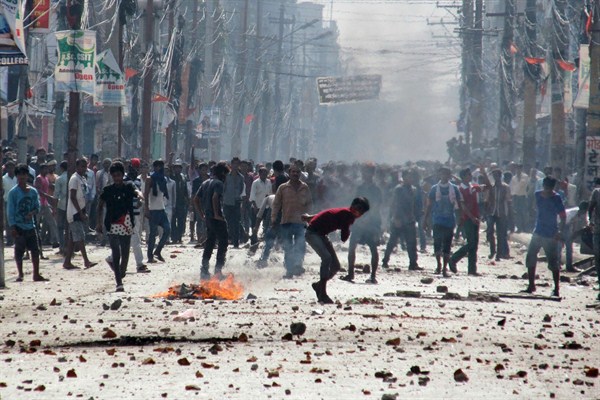Rather than resolve its ongoing political crisis, Nepal’s new constitution has produced a polarized internal landscape and complicated relations with its most important neighbor, India. The product of a peace process that brought insurgent Maoist rebels into mainstream politics, the new constitution was promulgated on Sept. 20, institutionalizing a federal, democratic and secular republic.
But it failed in its core task of bringing the country’s various ethnicities—there are over 100—and social groups together. Many social groups, especially the Madhesis and Tharus of southern Nepal, are deeply unhappy with its provisions on inclusion, political representation, federalism and citizenship, and have been leading a mass movement against it for more than two and a half months, leaving the country paralyzed.
India is also upset at the crisis at its doorstep, and is putting pressure on Nepal’s political leadership to make amends. But in Kathmandu, the protest movement against the constitution is being dismissed as an Indian-sponsored plot, while ultra-nationalist sentiments run high and the government’s willingness to correct course is unclear.

